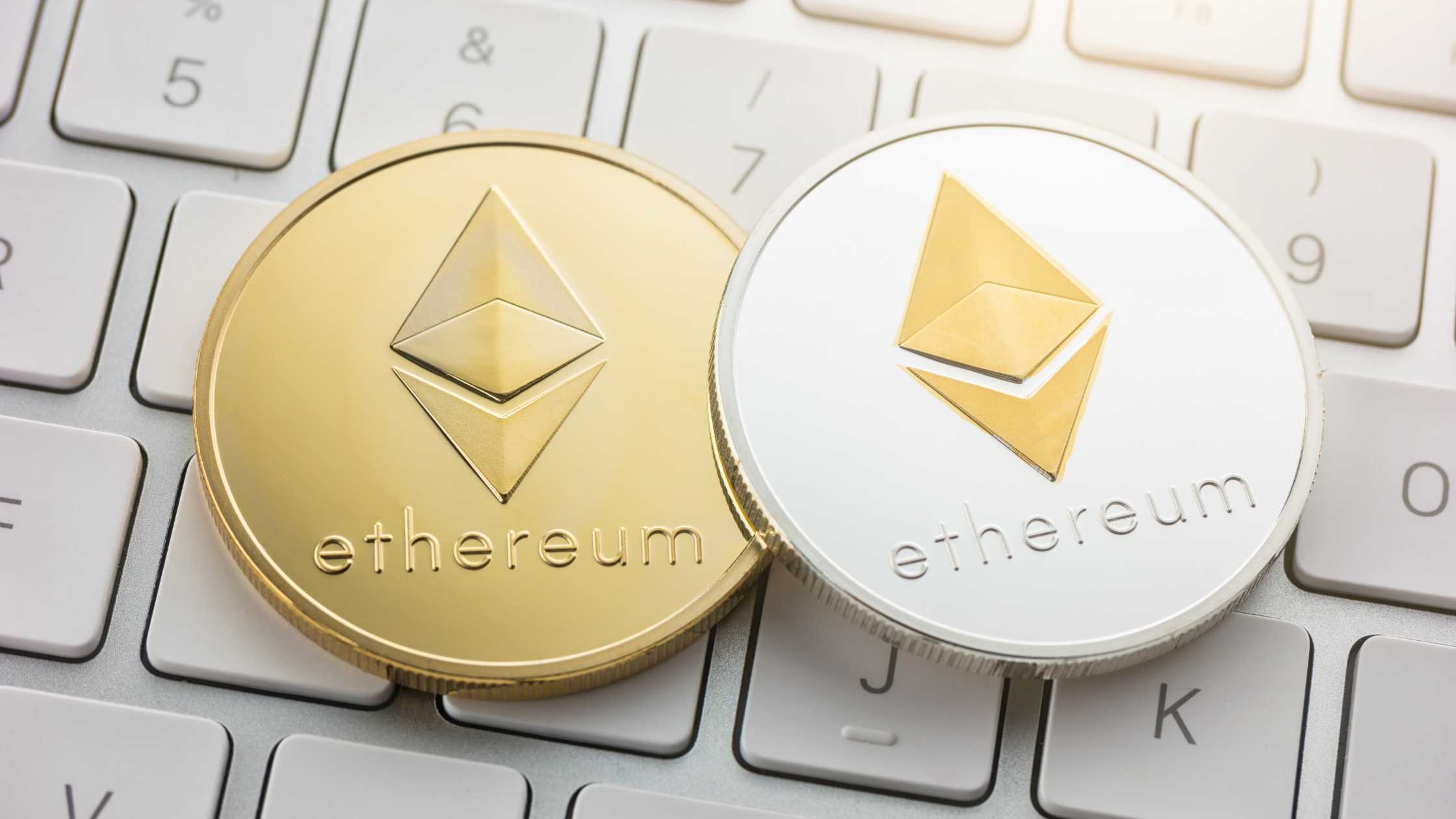
Uncovering the Revolutionary Potential of Ethereum: The World's Most Exciting Cryptocurrency!
Ethereum has become a household name in the cryptocurrency world, and for good reason. It has revolutionized how we interact with digital money and opened the door for a new way of doing business. In this blog, I will uncover the revolutionary potential of Ethereum and why it is the world’s most exciting cryptocurrency.
Table Of Contents
- Introduction to Ethereum
- What is Ethereum?
- Key Features of Ethereum
- Ethereum 2.0 Blockchain
- Ethereum Wallets
- Ethereum Smart Contracts
- Ethereum Virtual Machine (EVM)
- Ethereum DApps and DeFi
- Ethereum’s Revolutionary Potential
- Conclusion
Introduction to Ethereum
Ethereum is an open-source, decentralized blockchain-based platform and cryptocurrency that enables users to make transactions and smart contracts with one another.
It is also the world’s second-largest cryptocurrency by market capitalization, behind Bitcoin.
Ethereum was first proposed in 2013 by Vitalik Buterin, a Russian-Canadian programmer, who wanted to build a blockchain-based smart contract platform that could execute and enforce digital contracts.
Ethereum launched its official mainnet in July 2015 and since then, it has become one of the most popular and widely used cryptocurrencies in the world.
What is Ethereum?
The Ethereum network is a decentralized platform for executing applications, smart contracts, and transactions.
It is a distributed ledger that uses blockchain technology to facilitate peer-to-peer transactions without the need for a central authority.
The network is powered by Ether, the native cryptocurrency of the Ethereum network. Ether is used to pay for transactions and applications on the network. Transactions occur between users, with all nodes on the network verifying the transaction.
The Ethereum network is also home to smart contracts, which are self-executing digital contracts that contain specific instructions and are executed when certain conditions are met. Smart contracts are often used to facilitate transactions and automate processes on the Ethereum network.
Ethereum is also used to develop decentralized applications (DApps), which are applications that run on the Ethereum blockchain and are not controlled by any central entity. These applications are open source and are used to create trustless, immutable, and transparent systems.

Key Features of Ethereum
Ethereum has a number of features that make it one of the most popular and widely used cryptocurrencies in the world. These features include:
-It has its own blockchain, which is secured by a network of computers running the Ethereum software.
-Ether is the digital currency used to pay for goods and services on the Ethereum network, as well as transaction fees for executing smart contracts.
-It has a built-in programming language, known as Solidity, which enables developers to create applications on the Ethereum network.
-It’s a decentralized platform, meaning that it is not owned or controlled by any single entity.
-Has a wide range of applications and use cases, from digital payments to smart contracts and decentralized applications (DApps).

Ethereum 2.0 Blockchain
Ethereum 2.0 is the latest version of the Ethereum blockchain, released in December 2020. It is a major upgrade to the Ethereum blockchain, offering improved scalability, security, and privacy.
The new Ethereum 2.0 blockchain features sharding, the ability to break down large transactions into smaller parts and process them independently. This allows Ethereum 2.0 to process more transactions per second, making it much faster and more reliable than the previous version.
It also has improved security, with advanced cryptography, zero-knowledge proofs, and smart contracts.
Ethereum 2.0 also offers enhanced privacy, with shielded transactions, private transactions, and zero-knowledge proofs. This makes it much more difficult for unauthorized users to access private information and provides greater control over user data.
Overall, Ethereum 2.0 provides a faster, more secure, and more private experience for users, making it an excellent choice for developers and businesses utilizing the blockchain.
Ethereum Wallets
Ethereum wallets are software programs that allow users to store, send, and receive Ether and other digital assets on the Ethereum blockchain.
There are a variety of Ethereum wallets available, including hardware wallets, web wallets, desktop wallets, and mobile wallets.
Hardware wallets are physical devices that store users’ private keys, which are used to access their funds on the Ethereum network. I use Ledger Nano S and Ledger Nano X.
Web wallets are online wallets that store users’ private keys in the cloud.
Desktop wallets are software programs that can be installed on a user’s computer ex. Exodus and mobile wallets are apps that can be downloaded to a user’s smartphone or tablet.
Ethereum Smart Contracts
Smart contracts are computer programs that can automatically execute certain functions when certain conditions are met.
They are stored and executed on the Ethereum blockchain, and they are secured by cryptography, which means that they are virtually impossible to counterfeit or reverse.
Smart contracts are used for a variety of applications, including digital payments, escrow services, digital identity verification, and more.
They can also be used to facilitate decentralized applications (DApps) on the Ethereum network.

Ethereum Virtual Machine (EVM)
The Ethereum Virtual Machine (EVM) is the runtime environment for smart contracts on the Ethereum network.
It is a decentralized virtual machine that allows users to execute smart contracts on the Ethereum blockchain.
The EVM is a Turing-complete virtual machine, meaning it can execute any type of code and is capable of performing advanced calculations.
It provides a secure, trustless environment for executing contracts, allowing users to interact with each other in a secure and trustless manner.
The EVM is an important feature of the Ethereum network, as it allows for the development of decentralized applications, smart contracts, and automated transactions.
It is a self-contained environment that is not controlled by any single entity, allowing users to interact with each other in a trustless manner.

Ethereum DApps and DeFi
Decentralized applications (DApps) are applications that are built on the Ethereum network. They are powered by smart contracts, which enable them to be secure, transparent, and reliable.
DApps can be used for a variety of applications, such as digital payments, escrow services, digital identity verification, and more.
Decentralized finance (DeFi) is a type of DApp that is built on the Ethereum network and is used to facilitate the buying and selling of financial assets and services.
Smart contracts power DeFi applications, and they are designed to be secure, transparent, and reliable.

Ethereum's Revolutionary Potential
Ethereum has the capability to revolutionize the way we use the internet, allowing for the creation of trustless applications, smart contracts, and automated transactions.
It also has the potential to enable the creation of completely decentralized applications, giving users full control over their data and activities.
Ethereum could well be used as a platform for digital currency, with users being able to securely store, send, and receive cryptocurrency.
Ethereum has the potential to substitute traditional monetary organizations, enabling people to communicate with one another without the involvement of third parties. This could provide users with a safer and more private approach to transacting on the web since the blockchain records are changeless. This could have a significant effect on how we use the internet and process transactions.
Finally, Ethereum could be used as a platform for distributed computing, allowing for the development of decentralized applications and services. This could have a significant impact on how we collaborate, create, and share information online.

Conclusion
Ethereum is an incredible cryptocurrency with a lot of potentials. It has revolutionized how we interact with digital money and opened the door for a new way of doing business.
Ethereum’s decentralized platform and its ability to facilitate smart contracts and DApps have the potential to revolutionize the way we do business and the way we interact with digital money.
Ethereum is definitely an exciting cryptocurrency to watch, and I’m sure that it will continue to revolutionize the way we do business in the years to come.
If you’re interested in learning more about Ethereum, you can check out my courses or you can purchase Ethereum here.






